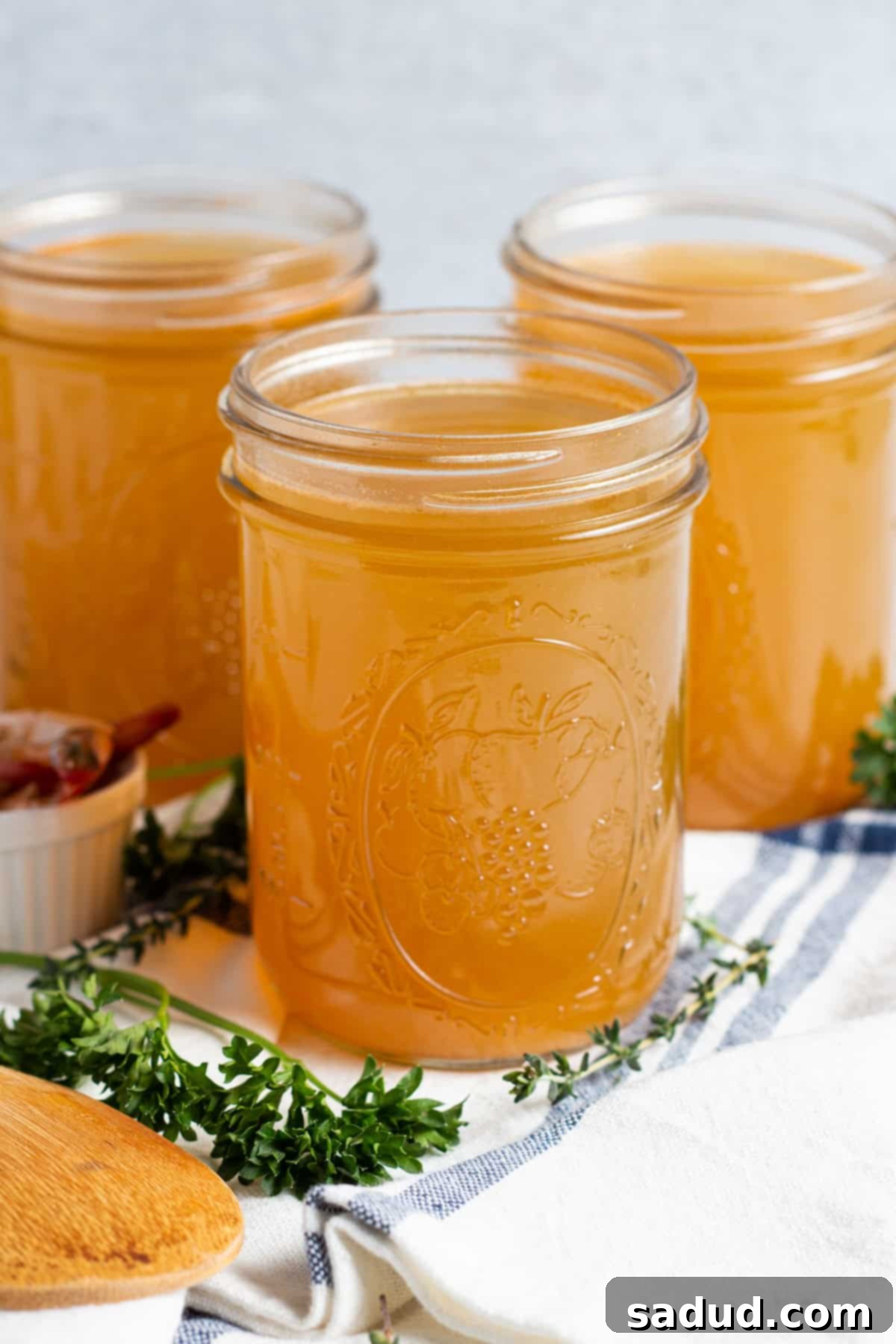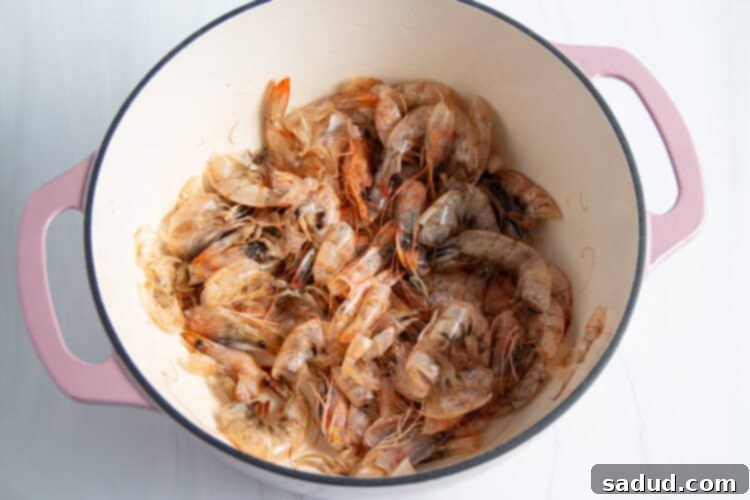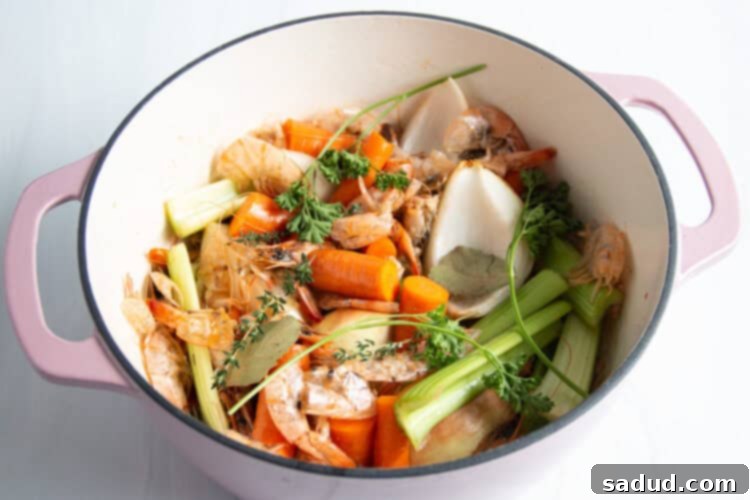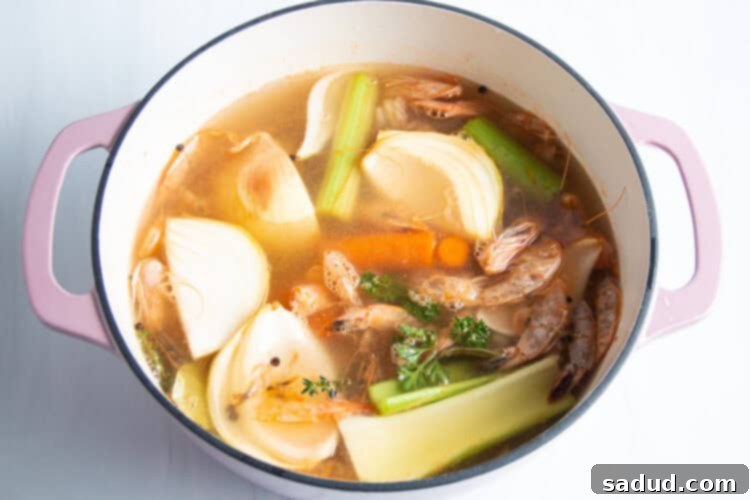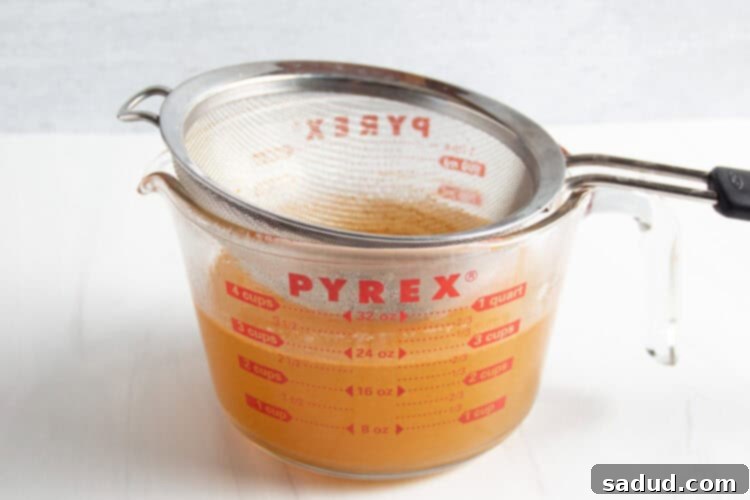Unlock Unforgettable Flavor: Your Guide to Making the Best Homemade Shrimp Stock
Elevate your culinary creations to an entirely new level with the rich, nuanced flavor of homemade shrimp stock. Far superior in depth and taste to any store-bought alternative, this versatile liquid gold is not only incredibly easy to prepare but also a brilliant way to utilize leftover shrimp shells, turning what might be considered waste into a valuable kitchen asset. Imagine infusing your seafood recipes with an authentic, briny essence that only fresh shrimp shells can provide. From the rustic charm of jambalaya and gumbo to the creamy indulgence of shrimp risotto, the vibrant complexity of cioppino, or the aromatic allure of paella, a dash of homemade shrimp stock transforms these already delightful dishes into extraordinary culinary experiences.
Crafting your own shrimp stock is a fundamental technique for any aspiring home chef looking to master seafood cooking. It provides a foundational layer of flavor that complements shrimp, fish, and other shellfish beautifully, bringing a cohesive and authentic taste profile to your meals. Moreover, it’s a testament to mindful cooking, reducing food waste by giving shrimp shells a second, delicious life.

Why Homemade Shrimp Stock is a Game-Changer for Seafood Lovers
Making your own shrimp stock might seem like an extra step, but the benefits it brings to your kitchen and your cooking are immense. It’s a simple process that yields incredible results, transforming everyday meals into something truly special.
- Unparalleled Ease of Preparation: Shrimp stock is surprisingly straightforward to make. The basic process involves simmering shrimp shells, a selection of fresh vegetables, and aromatic herbs in water. Within approximately 45 minutes, you can have a deeply flavorful broth. The most “labor-intensive” part is often just collecting enough shrimp shells. A clever chef’s tip for this is to save and freeze shells from any shrimp recipe you prepare. Simply toss them into a sealable freezer bag after peeling, and store them until you’ve accumulated enough to make a batch of stock. This approach makes stock preparation incredibly efficient and zero-waste.
- Explosive Flavor Enhancement: The primary reason to make homemade shrimp stock is the incredible depth of flavor it imparts to seafood dishes. While chicken broth or vegetable broth can be used as a substitute in a pinch, they simply cannot replicate the unique, savory, and subtly sweet ocean notes that only shrimp stock can provide. When a recipe calls for a liquid base in a seafood dish, swapping it for an equal amount of homemade shrimp stock will elevate the dish to new culinary heights. Imagine your gumbo gaining an authentic coastal richness, your risotto infused with a delicate, briny sweetness, your shrimp bisque becoming even more luxurious, or your jambalaya singing with oceanic harmony. This stock is truly the secret ingredient for outstanding seafood meals.
- Cost-Effective and Sustainable: By utilizing shrimp shells that would otherwise be discarded, you’re not only saving money on store-bought stock but also contributing to a more sustainable kitchen. It’s a wonderful example of nose-to-tail, or in this case, tail-to-stock cooking, making the most out of every ingredient.
- Control Over Ingredients: When you make your own stock, you control exactly what goes into it. This means no artificial flavors, excessive sodium, or preservatives often found in commercial products. You can tailor the seasoning and aromatics to your preference, ensuring a clean, pure flavor profile.
Expert Tips for Crafting the Perfect Shrimp Stock
Achieving a truly exceptional shrimp stock is a combination of quality ingredients and a few key techniques. These expert tips will help you maximize flavor and ensure your homemade stock is nothing short of perfect.
- Embrace the Full Shrimp Shells (Heads Included!): For the most intensely flavored shrimp stock, we highly recommend using full shrimp shells, including the heads. Shrimp heads are reservoirs of incredible flavor, containing rich fats and juices that impart a deep, complex essence to your stock. While they might not be the most aesthetically pleasing part of the shrimp, their contribution to the final taste is undeniable. However, if you prefer to skip them due to personal preference, rest assured that your stock will still be delicious and flavorful, though perhaps a touch milder.
- Always Use Uncooked Shrimp Shells for Peak Flavor: The secret to the most flavorful shrimp stock lies in using uncooked shrimp shells. While shells from already cooked shrimp can be used in a pinch, they will yield a significantly weaker and less vibrant flavor. Raw shells release more of their inherent essence during the simmering process, resulting in a richer, more aromatic stock. If you’re peeling shrimp specifically for this stock, make sure to give the shells a good rinse under cold water beforehand. If you’re using shells that you’ve peeled in advance and stored in the freezer, thaw them overnight in the refrigerator before using them to ensure they’re ready to release all their flavor.
- Consider Roasting Your Shells for Deeper Notes: For an even more profound and complex flavor, consider briefly roasting your shrimp shells before adding them to the pot with the vegetables. A quick toss with a little oil and a few minutes in a hot oven (around 400°F or 200°C) until they turn pink and fragrant will caramelize some of their natural sugars and deepen their savory notes, adding an extra layer of richness to your finished stock.
- Fresh vs. Dried Herbs: Flexibility is Key: While fresh herbs like thyme and parsley impart a brighter, more vibrant flavor to your stock, dried herbs are a perfectly acceptable and convenient alternative if fresh sprigs aren’t readily available. As a general guideline, use about half a teaspoon of each dried herb for every sprig of fresh herb recommended. Feel free to adjust the quantities to suit your personal taste preferences, remembering that dried herbs tend to be more concentrated in flavor.
- The Art of Simmering: Don’t Overcook: The ideal simmering time for shrimp stock is around 45 minutes to an hour. Unlike beef or chicken stock, which benefit from longer cooking times, shrimp stock can develop bitter notes if simmered for too long. The goal is to extract the essence from the shells and aromatics without overcooking and diminishing the delicate seafood flavor.
- Proper Straining for a Crystal-Clear Stock: After simmering, straining is crucial. Use a fine-mesh sieve or strainer to separate the liquid from all the solids. For an even clearer and purer stock, consider straining it a second time through a cheesecloth-lined sieve. This extra step removes any tiny impurities, resulting in a beautiful, clean stock.
- Smart Storage Solutions for Freshness and Convenience: You can absolutely prepare your shrimp stock ahead of time and store it for future use.
- Refrigeration: Freshly made stock can be refrigerated in airtight containers, such as mason jars, for up to 3 days. Ensure the stock cools completely before sealing and refrigerating to prevent condensation and bacterial growth.
- Freezing: For longer storage, freezing is an excellent option. Transfer the completely cooled stock into freezer-safe containers. Mason jars are great, but be sure to leave some headspace for expansion if freezing liquid. Ice cube trays are fantastic for creating convenient, portion-sized blocks of stock – simply pop them out once frozen and transfer them to a freezer bag. If using sealable freezer bags, lay them flat on a freezer shelf until they’re solid. This method saves freezer space and makes it easy to stack them. Frozen shrimp stock can maintain its quality for up to 6 months. Clearly label your containers with the date for easy tracking.
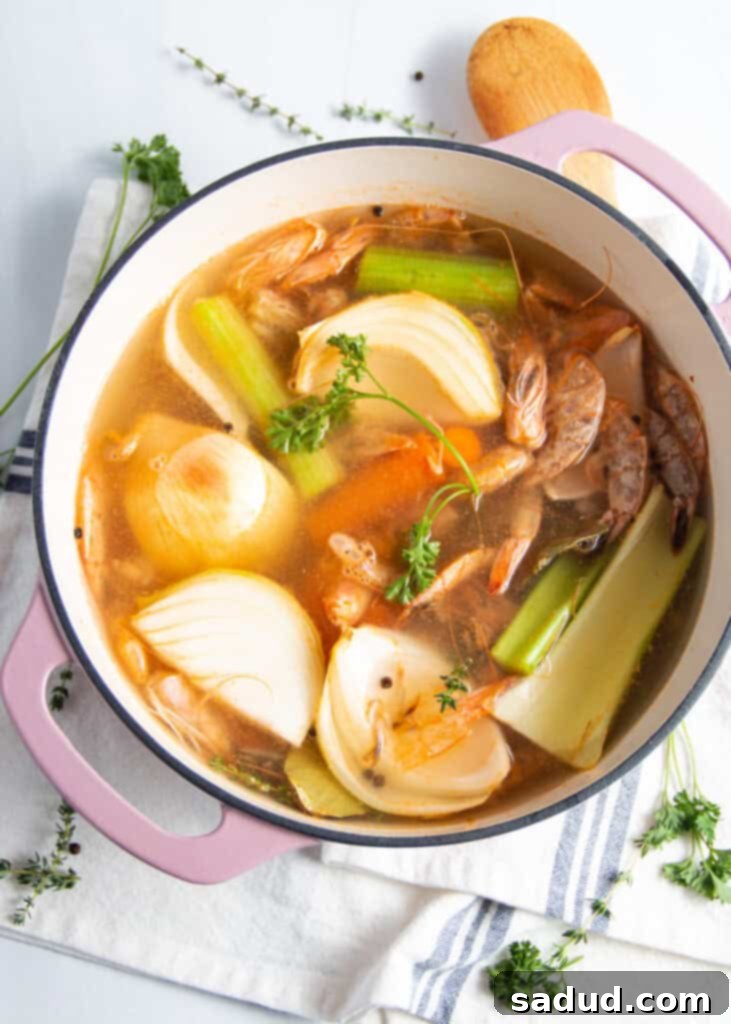
Essential Ingredients for a Rich and Aromatic Shrimp Stock
The beauty of shrimp stock lies in its simplicity and the quality of its components. Each ingredient plays a vital role in building the layered flavors that make this stock so indispensable.
- Shrimp Shells: The Foundation: The absolute star of the show. Aim for shells from at least two pounds of raw shrimp for a robust flavor. As mentioned, raw shells are best, and shrimp heads add significant depth.
- Aromatics (Mirepoix): Carrots, Celery, Onion: This classic trio, known as mirepoix, provides a sweet and savory base. Roughly chopped vegetables are perfect as they’ll be strained out later. They release their natural sugars and earthy notes, complementing the seafood.
- Garlic: Pungent Depth: Smashed garlic cloves add a pungent, savory backbone that pairs wonderfully with shrimp. It brings a warmth and complexity without overpowering the delicate seafood flavor.
- Lemon: Brightness and Acidity: Half of a lemon, added to the simmer, introduces a much-needed touch of acidity and brightness. This helps to cut through the richness and highlight the fresh taste of the shrimp, preventing the stock from becoming too heavy or muddy.
- Herbs: Bay Leaves, Thyme, Parsley: These classic herbs are chosen for their ability to infuse the stock with an earthy, herbaceous aroma. Bay leaves offer a subtle menthol-like note, thyme brings a savory, slightly floral quality, and parsley adds freshness. These three together create a harmonious blend that enhances the shrimp without competing with it.
- Whole Peppercorns: Gentle Spice: Whole peppercorns add a mild, peppery warmth without the harshness of ground pepper. They contribute to the overall aromatic profile, giving the stock a subtle kick.
- Cold Water: The Extraction Medium: Starting with cold water is crucial for stock making. As the water slowly heats, it gradually extracts flavors from the shells and vegetables, resulting in a more flavorful and less cloudy stock.
- Salt: Seasoning to Taste: A touch of salt is necessary to draw out and enhance the flavors of all the ingredients. Remember to season lightly initially, as the stock will concentrate as it cooks, and you can always adjust to taste at the end.
Maximizing Flavor: How to Use Your Homemade Shrimp Stock
Once you’ve made a batch of this exquisite homemade shrimp stock, the culinary possibilities are endless. It’s designed to be a direct and superior replacement for chicken or vegetable broth in any recipe where a seafood flavor would be welcome.
- Soups and Stews: This is where shrimp stock truly shines. Use it as the base for rich seafood bisques, hearty cioppino, or any creamy seafood chowder. It’s absolutely essential for authentic shrimp gumbo, lending a depth that simply can’t be achieved with other broths. Consider it for a lighter shrimp and corn soup for a refreshing twist.
- Risottos and Paellas: For creamy shrimp risotto or a vibrant seafood paella, shrimp stock is a non-negotiable ingredient. It infuses every grain of rice with a delicate seafood essence, creating an incredibly cohesive and flavorful dish. An Instant Pot Paella will be even more amazing with this stock.
- Sauces and Pan Reductions: When searing shrimp or scallops, deglaze the pan with a splash of shrimp stock to capture all those delicious browned bits. Reduce it slightly to create a quick, flavorful sauce that perfectly complements your seafood. It can also form the base of more complex cream or butter sauces for fish.
- Steaming and Poaching: Use shrimp stock as the poaching liquid for delicate fish fillets or to steam mussels and clams. The stock imparts its flavor directly into the seafood, resulting in incredibly moist and flavorful results.
- Cooking Grains: Replace water or other broths with shrimp stock when cooking rice, couscous, or quinoa that will accompany seafood. It’s a simple trick to add an extra layer of flavor to your side dishes.
Frequently Asked Questions About Homemade Shrimp Stock
Here are answers to some common questions that arise when making your own shrimp stock:
Can I use shells from cooked shrimp?
While technically possible, it is strongly recommended to use raw shrimp shells. Cooked shells have already released much of their flavor during their initial cooking, resulting in a significantly weaker and less vibrant stock. For the best results, always opt for raw shells.
Should I include shrimp heads?
Absolutely, if you can! Shrimp heads contain a wealth of flavor, including fats and juices that contribute to a richer, more robust stock. While some people are hesitant due to appearance, their contribution to the flavor profile is immense. If you prefer not to use them, the stock will still be good, just a little less intense.
How long does homemade shrimp stock last?
Homemade shrimp stock can be refrigerated in an airtight container for up to 3 days. For longer storage, it freezes beautifully for up to 6 months. Make sure the stock is completely cool before refrigerating or freezing.
Can I roast the shells first?
Yes, and it’s a highly recommended technique for a deeper, more complex flavor! Lightly tossing the shells with a bit of oil and roasting them in a hot oven (around 400°F/200°C) for 10-15 minutes until they turn pink and fragrant will caramelize their sugars and intensify their savory notes before you simmer them with the aromatics.
What other aromatics or spices can I add?
Feel free to experiment! Fennel bulb or fennel seeds can add a lovely anise note. A small amount of tomato paste browned with the shells can deepen the color and add umami. A pinch of red pepper flakes can introduce a subtle heat. Just be mindful not to overpower the delicate shrimp flavor.
Can I make shrimp stock in a slow cooker or Instant Pot?
Yes, you can! For a slow cooker, combine all ingredients and cook on low for 4-6 hours. For an Instant Pot, combine ingredients, set to high pressure for 20 minutes, then allow a natural release for 10-15 minutes before quick-releasing any remaining pressure. Both methods yield excellent results and can be more hands-off.
More Delicious Recipes With Shrimp
- Greek Shrimp Salad With Feta And Rice
- Shrimp Remoulade
- Instant Pot Paella
- Shrimp And Corn Soup
- Creamy Shrimp Risotto With Parmesan
- Shrimp Gumbo
Making homemade shrimp stock is a simple yet incredibly rewarding endeavor that will revolutionize your seafood cooking. With minimal effort and a commitment to utilizing every part of your ingredients, you can create a culinary staple that adds depth, authenticity, and unforgettable flavor to countless dishes. Give it a try – your taste buds will thank you!
If you loved this recipe as much as we did, don’t forget to leave us a review below. ★ Follow Easy Healthy Recipes on Pinterest, Facebook, and Instagram, too!
For more delicious recipes, visit our sister sites, 40 Aprons and Easy Cheap Recipes.
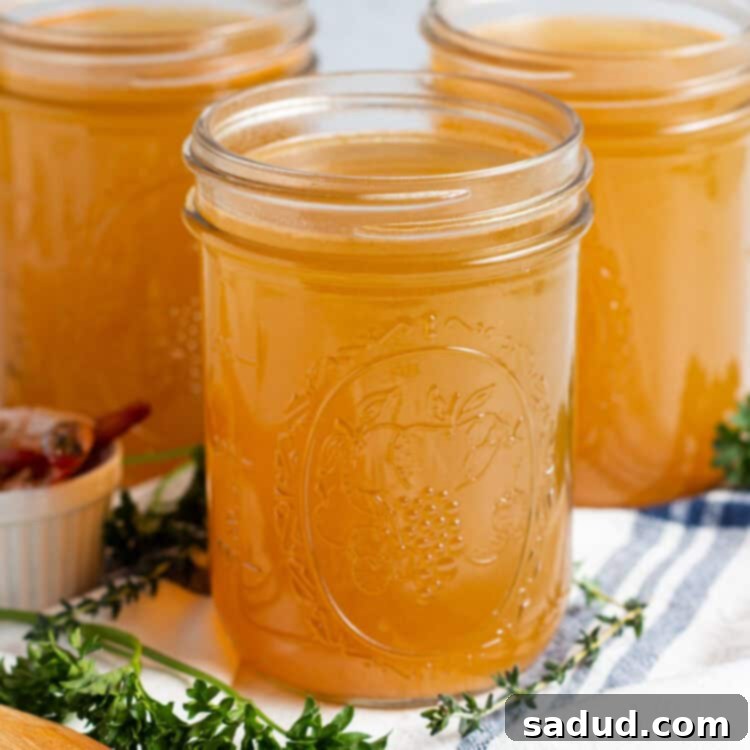
Shrimp Stock
 Cheryl Malik
Cheryl Malik
Print
SaveSaved!
Ingredients
- 1 teaspoon avocado oil or olive oil
- shrimp shells from 2 pounds of raw shrimp
- 3 medium carrots roughly chopped
- 3 large celery stalks roughly chopped
- 1 medium yellow onion roughly chopped
- 3 cloves garlic smashed
- half of one lemon
- 2 bay leaves
- 3-4 sprigs fresh thyme
- 4-5 sprigs fresh parsley
- 1 teaspoon whole peppercorns
- 8 cups cold water
- 1 teaspoon salt more or less to taste
Equipment
-
Dutch oven or large, heavy-bottomed pot with lid
-
ladle
-
sieve or fine mesh strainer
-
Large bowl
-
airtight jars with lids for storage
Instructions
-
Heat dutch oven over medium heat. After 2 minutes, or when pot is warm, add avocado oil and swirl pot to coat bottom with oil. Warm oil until hot and shimmering, then add shrimp shells. Cook shells in oil, stirring constantly, for 5 minutes.

-
After 5 minutes, add carrots, celery, onion, and garlic to pot. Cook aromatics 10 minutes, stirring often.

-
After 10 minutes, add lemon, bay leaves, thyme, parsley, peppercorns, cold water, and salt to dutch oven. Stir well to distribute ingredients, then increase heat and bring liquid to boil.

-
Once liquid begins to boil, cover pot with lid and reduce heat to low. Simmer, covered, 45 minutes.
-
After 45 minutes, carefully remove lid and set aside. Place sieve or strainer in large bowl. Ladle liquid from pot into sieve, or carefully pour ingredients out of pot and into sieve, straining out all aromatics and shrimp shells. If desired, transfer sieve or strainer to second large bowl and pour liquid from first bowl into sieve, straining stock once more.

-
Use stock immediately, or equally divide stock among jars and let cool completely. Once cooled, seal jars with airtight lids and refrigerate or freeze stock until ready to use.
Notes
- Storage: Refrigerate shrimp stock in airtight jars up to 3 days. To freeze, transfer cooled stock from bowl to jars, ice cube trays, or sealable freezer-safe bags. If using bags, place filled bags flat in freezer for 1 to 2 hours or until frozen, then rearrange as needed. Frozen stock will keep up to 6 months.
Nutrition Information
Number of total servings shown is approximate. Actual number of servings will depend on your preferred portion sizes.
Nutritional values shown are general guidelines and reflect information for 1 serving using the ingredients listed, not including any optional ingredients. Actual macros may vary slightly depending on specific brands and types of ingredients used.
To determine the weight of one serving, prepare the recipe as instructed. Weigh the finished recipe, then divide the weight of the finished recipe (not including the weight of the container the food is in) by the desired number of servings. Result will be the weight of one serving.
